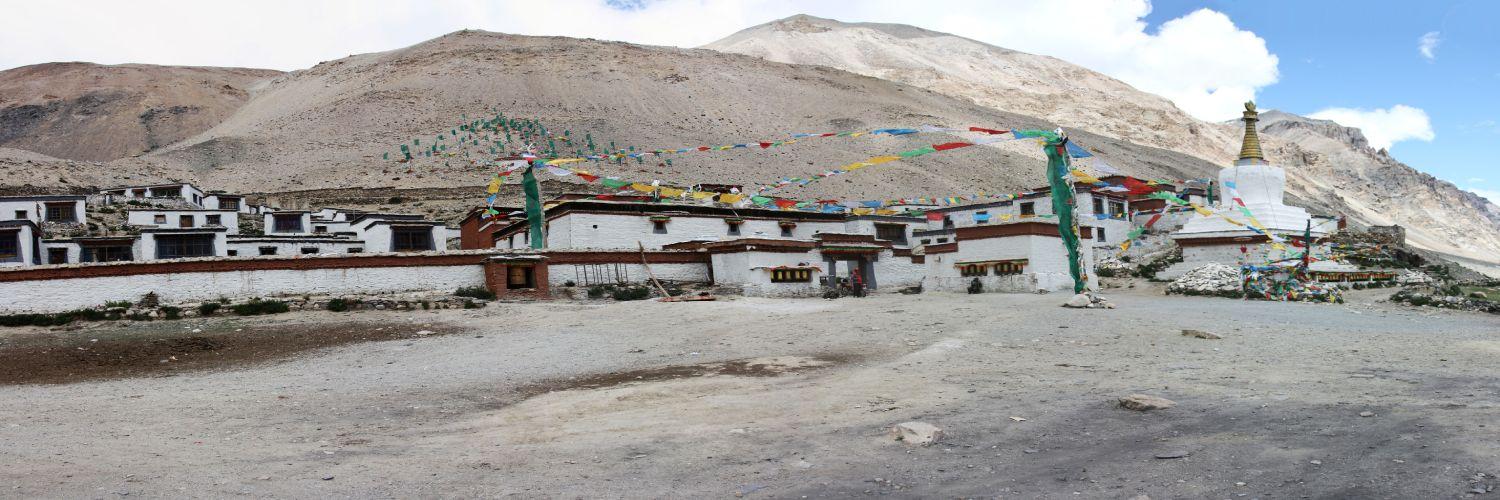High in the Himalayas, on the northern face of Mount Everest, lies Rongbuk Monastery, one of the world’s most iconic and spiritually significant sites. Nestled at an altitude of around 4,980 meters (16,340 feet), Rongbuk is not only the highest monastery on Earth but also a window into Tibetan Buddhist culture, spirituality, and the dramatic landscapes of the Everest region.
For trekkers, travelers, and cultural explorers, Rongbuk Monastery offers much more than a stop on the way to Everest Base Camp (North Side). It is a place where Himalayan history, spirituality, and breathtaking scenery merge to create an unforgettable travel experience.
In this blog, we’ll dive deep into everything you need to know about Rongbuk Monastery - its history, location, altitude, spiritual significance, how to get there, what to expect, and why it should be on your bucket list.
Where is Rongbuk Monastery Located?
Rongbuk Monastery lies in Tibet Autonomous Region (TAR), China, about 8 kilometers from Everest Base Camp (North). Perched in the Rongbuk Valley, it provides unmatched views of the mighty Mount Everest (known locally as Chomolungma).
-
Region: Tingri County, Shigatse Prefecture, Tibet
-
Altitude: 4,980 meters (16,340 feet)
-
Proximity: Around 8 km to North Everest Base Camp
-
Access Point: Lhasa via Shigatse
Its location makes it a spiritual and scenic highlight for trekkers heading towards Everest from the Tibetan side.
The Altitude of Rongbuk Monastery
At nearly 5,000 meters above sea level, Rongbuk Monastery holds the record as the highest monastery in the world.
For visitors, this extreme altitude can be both awe-inspiring and challenging:
-
Oxygen levels are significantly lower, requiring acclimatization.
-
The climate is cold, dry, and windy year-round.
-
Views of Everest’s north face are exceptionally clear on bright days.
Trekkers often pause here to rest, acclimatize, and immerse themselves in Tibetan Buddhist culture before continuing to Everest Base Camp.
History of Rongbuk Monastery
Founded in 1902 by Lama Ngawang Tenzin Norbu, a disciple in the Nyingma tradition of Tibetan Buddhism, Rongbuk has long served as a spiritual retreat for monks and nuns.
Historically, the Rongbuk Valley was dotted with meditation caves used by hermits for centuries. The monastery expanded this tradition into a community center for religious practice. Despite facing challenges during Tibet’s turbulent political history, Rongbuk Monastery has endured as a living spiritual site.
Today, it attracts pilgrims, monks, nuns, trekkers, and adventure seekers from around the globe.
Spiritual Significance
Rongbuk Monastery is deeply tied to Tibetan Buddhist traditions. Its position at the foot of the world’s highest mountain adds profound symbolism of endurance, enlightenment, and spiritual ascension.
Visitors can:
-
Witness daily rituals and chants of monks and nuns.
-
Explore the chortens (stupas) and prayer flags fluttering against Everest’s backdrop.
-
Connect with local Sherpa and Tibetan communities who treat the site as sacred.
For many, standing in Rongbuk feels like standing at the crossroads of earth and sky, spirituality and adventure.
Architecture of Rongbuk Monastery
Though relatively modest compared to Lhasa’s Potala Palace or Tashilhunpo Monastery, Rongbuk is a striking complex of:
-
Whitewashed stone buildings
-
Prayer halls with murals depicting Buddhist deities
-
Chortens surrounded by colorful prayer flags
-
Modest living quarters for monks and nuns
The simplicity of Rongbuk reflects the harsh environment and spiritual humility of high-altitude Buddhist practice.
Rongbuk Monastery and Everest Expeditions
Rongbuk has long been intertwined with the history of Everest expeditions from the north side.
-
In the 1920s and 1930s, early British expeditions to Everest (led by George Mallory and others) passed through Rongbuk Monastery for blessings.
-
Climbers still stop here to pay respect before heading to base camp.
-
The monastery’s location provides one of the best vantage points for photographing Everest’s north face.
Visiting Rongbuk Monastery - Travel Guide
How to Get There
-
Via Lhasa - Most travelers fly or take the train to Lhasa, acclimatize, then journey overland through Shigatse to Rongbuk.
-
From Nepal - Travelers can cross the Gyirong Border and head towards Tingri, eventually reaching Rongbuk.
Best Time to Visit
-
April to June and September to October: Clear skies, best mountain views.
-
Winter: Extremely cold and less accessible.
-
Summer: Rain and cloud cover may block views.
Accommodation
-
Rongbuk Monastery Guesthouse: Simple rooms with basic facilities.
-
Tent Camps: Seasonal camps near Everest Base Camp.
-
Shigatse Hotels: More comfortable options further away.
Practical Tips for Visitors
-
Acclimatize properly before visiting (spend time in Lhasa or Shigatse first).
-
Carry warm clothing - temperatures drop drastically.
-
Respect monastery customs: dress modestly, ask before taking photos.
-
Be prepared for basic facilities - Rongbuk is remote.
-
Travel with a licensed Tibetan tour operator like Best Heritage Tour, as independent travel is restricted.
Why Rongbuk Monastery Should Be on Your Travel List
Rongbuk Monastery is not just a destination; it is an experience of extremes:
-
The highest monastery on earth
-
A cultural and spiritual gateway to Everest
-
A blend of natural beauty and ancient traditions
For trekkers, it offers both a challenge and a blessing before stepping closer to the world’s highest mountain. For cultural travelers, it is a rare chance to witness Tibetan spirituality in a breathtaking setting.
Conclusion - Explore Rongbuk Monastery with Best Heritage Tour
Rongbuk Monastery is more than just a stopover; it is a living symbol of endurance, faith, and the Himalayas’ timeless spirit. Whether you are a trekker, a cultural traveler, or someone seeking a once-in-a-lifetime journey, Rongbuk will leave you with stories etched in your memory forever.
At Best Heritage Tour, we bring you closer to such hidden gems of the Himalayas. From Nepal’s iconic treks and cultural tours to cross-border journeys into Tibet, our expert team ensures safe, enriching, and unforgettable travel experiences.
Phone: +977-9851149197 / +977-9810043046
Email: info@bestheritagetour.com | bestheritagetour@gmail.com
Website: www.bestheritagetour.com
Office: Thamel Marg, Kathmandu, Nepal
Author: Best Heritage Tour
Date: 18th September, 2025


